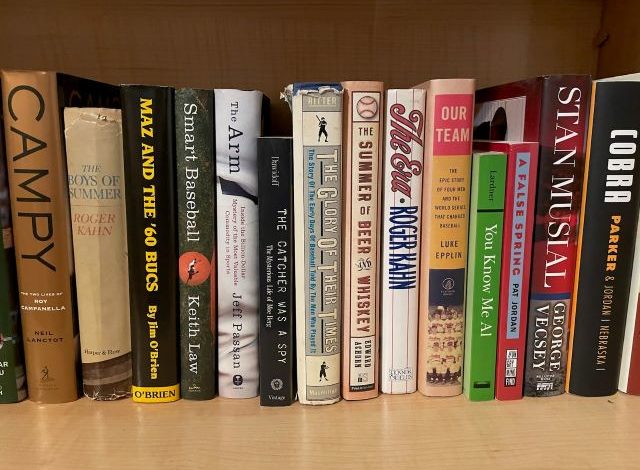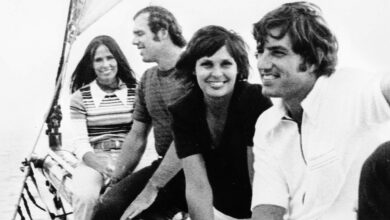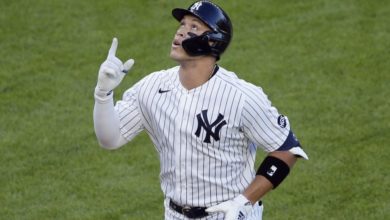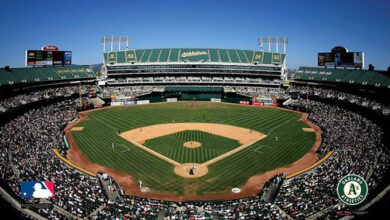
Looking for a last-minute Father’s Day gift for your baseball-loving Dad? Or maybe you just want to “accidentally” leave this up on your screen for your kids to see. As a public service, I hereby present a list of baseball books I believe would make great gifts. I’d call them “good reads” except I hate it when verbs are used as nouns. I’ve omitted books like The Boys of Summer, Ball Four, The Glory of Their Times and The Summer Game — you know, the ones “everybody” has read.
Try the following instead, presented by category, then alphabetically by author. I’ve eschewed the traditional bibliography format, figuring nobody cares about the publisher or the date and place of publication. So here it is. Don’t thank me. It’s what I do.
Autobiographies and memoirs
Hank Aaron with Lonnie Wheeler, I Had a Hammer: The Hank Aaron Story. To many, Aaron is still the home run king. Here he tells his life story, including the racism he faced as he chased Babe Ruth‘s all-time record. Aaron actually saved all of his hate mail and reproduces some examples in the book. It’s as much a social history as it is a baseball memoir.
Pat Jordan, A False Spring. Before becoming a renowned sports journalist and author, Jordan was a hard-throwing, hot pitching prospect in the Milwaukee Braves system. Alas, control and consistency eluded him. This is his coming-of-age tale of squandered talent, at once funny and sad.
Dave Parker and Dave Jordan, Cobra. Parker was big and gave 100% on the baseball diamond. He gave 100% to his book, which is also big. Most of it covers his time with the Pittsburgh Pirates. It’s aptly subtitled “A Life of Baseball and Brotherhood.” My more detailed review is found here.
Joe Torre and Tom Verducci, Chasing the Dream. Written and published after the New York Yankees’ 1996 World Series victory, it mostly focuses on that season. It’s worth reading for Torre’s candor about how he managed certain personalities. It’s a book one would expect from a retired manager, not one intending to continue managing the same team.
Baseball history
Luke Epplin, Our Team, the story of the Cleveland Indians’ 1948 World Series championship season and how an owner and two former Negro League stars — one quiet and dignified, the other flamboyant — made it happen. Go here for my more detailed review.
Peter Golenbock, Bums, the entire history of the Brooklyn Dodgers, the successful/tragic team that broke their fans’ hearts every year but one, and finally by leaving for Los Angeles, told in oral history format by the players, scribes and fans. Actually, any of Golenbock’s oral histories will do, but this one has the most interesting subject matter.
David Halberstam, Summer of ’49. The accomplished journalist, acclaimed for his reporting on the civil rights movement and the Vietnam War, applies the same attention to detail to the 1949 American League pennant race that went down to the last day, as the Yankees and Red Sox battled it out.
Roger Kahn, The Era. Kahn has written many other great baseball books besides The Boys of Summer. Although most of it happened before I was born, the best era for baseball had to be 1947-60. After all, it was post-World War II and pre-expansion, and the color barrier had been broken. In other words, baseball had the least amount of teams with the greatest amount of players available. Kahn agrees with this premise (hence the title). His breezy narrative style puts you right there.
Jim O’Brien, Maz and the ’60 Bucs. O’Brien self-publishes his own books in his Pittsburgh Pride series. This is one of the best of the bunch. It’s the story of the 1960 World Series-winning Pirates in the form of a series of essays and interviews with the players and the unique characters who hung around Forbes Field. It’s also a personal account of what it was like for a student at the nearby University of Pittsburgh.
Mike Shropshire, Seasons in Hell, a laugh-out-loud funny account of the 1973-75 Texas Rangers, who the author calls “the worst baseball team in history.” While I’m not sure I totally agree with that designation, it’s true, as Shropshire points out, every team managed by Billy Martin and Whitey Herzog made it to the postseason at least once — except the Rangers.
Biographies
Nicholas Dawidoff, The Catcher Was a Spy, the life of catcher Moe Berg, the only major league baseball player to also serve as a spy for the CIA, then known as the OSS (Office of Strategic Services).
Neil Lanctot, Campy: The Two Lives of Roy Campanella. It only took 18 years after his death for somebody to write an authoritative biography of the great Brooklyn Dodgers catcher and three-time National League MVP, who became a paraplegic after a car accident on his way home from “something he shouldn’t have been doing.”
David Maraniss, Clemente: The Passion and Grace of Baseball’s Last Hero. The author of definitive biographies of Bill Clinton and Vince Lombardi takes on the life of the great Roberto Clemente. Of course, there are other Clemente biographies available. What sets this one apart are the facts uncovered about the airplane crash that took Clemente’s life.
George Vecsey, Stan Musial: An American Life. There’s very little controversy to be found in these pages. Rather, it’s just the story of a nice guy who happened to win three MVP awards and seven batting titles and play in 24 All-Star Games.
Fiction
John Fante, 1933 Was a Bad Year. The great Italian-American novelist Fante is better known for his classics, Wait Until Spring, Bandini and Ask the Dust. Here we have a posthumously released, perhaps uncompleted, story of 17-year-old Dominic Molise, a high school pitcher who’s convinced a major league career awaits him. He’ll chase his dream even if it means taking steps that will plunge his family into financial ruin. The usual Fante themes of family, poverty, Italian heritage and Catholic faith are all here.
Ring Lardner, You Know Me, Al. Humorist Lardner cleverly tells the story of fictional 1912-14 Chicago White Sox pitcher Jack Keefe through a series of letters Keefe writes to his lifelong friend Al. Keefe is stubborn, cheap, vain, selfish, not nearly as smart or as good as he thinks he is, quick to make excuses for failures, slow to realize he’s being taken advantage of and yet oddly likeable. Dad will be laughing out loud at an approximate rate of once every other page at this timeless classic.
Scholarly
Keith Law, Smart Baseball. If Dad needs a good explanation of all these new-fangled analytics, this is the book that will do it. Flaws with “traditional” statistics are explained, while concepts like WAR, WRC, WPA and FIP are introduced. My favorite chapter is “Holtzman’s Folly: How the Save Rule Has Ruined Baseball.”
Jeff Passan, The Arm. Passan posits for all the billions of dollars spent on pitchers, major league teams still know almost nothing about the pitching arm. In the process, he examines Tommy John surgery and pitch counts and compares American and Japanese philosophies about throwing. Far from a dry treatise, he adds human elements with the rehabilitations of Daniel Hudson and Todd Coffey (Hudson comes across as likeable; Coffey, not so much) and a behind-the-scenes look at the Chicago Cubs’ efforts to sign Jon Lester. Passan even did the impossible and interviewed Sandy Koufax!
For the fan who knows everything
Edward Achorn, The Summer of Beer and Whiskey. German immigrant Chris Von Der Ahe knew nothing about baseball. In 1880, he founded the St. Louis Browns of the American Association, the team that was later to become the St. Louis Cardinals, solely to sell beer. The “summer” referred to is the 1883 season and the wild pennant race between the Browns and the Philadelphia Athletics. The tale of this scheming “beer garden” proprietor who accidentally had a profound effect on baseball is not only essential reading, it’s often hysterically funny.
Gary Cieradkowski, The League of Outsider Baseball. I thought I knew my baseball history pretty well. This book made me realize how little I know. To get a good idea of the type of stories that await the reader, check out the author’s web site.





